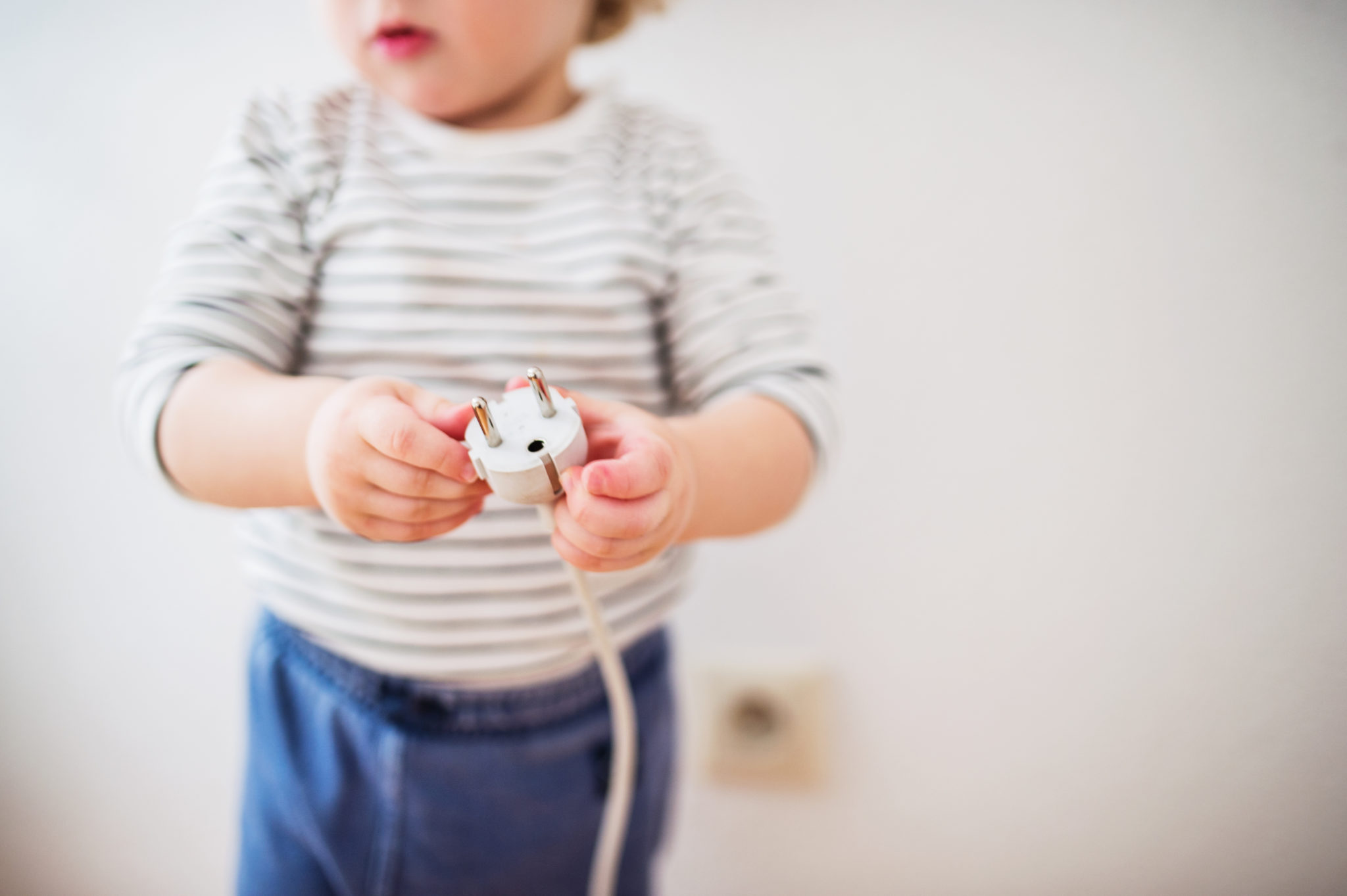May is National Electrical Safety Month

Did you know that the average American home was built in the 70s? Many existing homes simply can’t handle the demands of today’s electrical appliances and devices. With the recent increase in people working from home, here are a few tips to keep your family and home safe and accident-free.
First, let’s go over some electrical terms that you may have heard of, but maybe don’t completely understand. Definitions provided by The Spruce.
- Main Service Panel (also known as the breaker box): Once electricity has passed through the meter, it flows into the breaker box. Two large “hot” wires connect to big screw terminals, called lugs, inside the service panel, providing all the power to the panel. A third service cable, the neutral, connects to the neutral bus bar inside the panel. In simple terms, electricity is supplied to the house on the hot wires. After it flows through the household system, it is fed back to the utility on the neutral wire, completing the electrical circuit.
- Fuse: An electrical device that opens a circuit when the current flowing through it exceeds the rating of the device.
- Circuit breaker: Located inside the main panel, this is the large breaker that controls the power to the rest of the circuit breakers located inside the panel. Turning off the main breaker stops the flow of power to all of the branch circuit breakers in the panel, and therefore to all of the circuits in the house. However, power is always flowing into the panel and to the service lugs even when the main breaker is shut off unless the power is shut off at a separate disconnect switch. Power is always present in the utility service lines and the electric meter unless it is shut off by the utility.
- Conduit: Plastic tubing or rigid metal that protects individual insulated wires. Used in sheds, garages, and other outdoor applications where the wiring must be protected from exposure.
- Dedicated circuit: Used for critical-use appliances, such as refrigerators and furnaces. Microwaves and dishwashers will also sometimes be on a dedicated circuit. A dedicated circuit reduces the number of overloaded circuits by having the ability to be shut off at the service panel without interrupting service to other devices (such as light fixtures).
- Meter: measures the amount of electricity your home uses. It only runs when electricity is being used in the house and is the basis for the charges on your electrical bill.
Next, let’s talk about one of the most common causes of residential electrical fires and overloaded electrical circuit.
According to the National Fire Protection Association, 47,700 home fires in the U.S. are caused by electrical failure or malfunction each year.
Some of the warning signs of an overloaded electrical system include the following: • Frequent tripping of circuit breakers.• Blowing of fuses.• Dimming of lights when other devices are turned on.• Outlets or switches make a buzzing sound, are discolored, or hot to the touch.• Flickering lights.• Appliances that seem underpowered.
Here are some easy ways you can go about avoiding overloading your circuits:
- Label your circuit breakers to understand the different circuits in your home.Move appliances to an outlet that isn’t in high use.
- Reduce your electrical load by using energy. Efficient appliances and lighting, such as LED bulbs.Have your home inspected by a qualified electrician if it’s older than 40 years or has had a major appliance installed.Have a qualified electrician install new circuits for high energy use devices.
- Childproof your outlets. All receptacles in homes should be protected by TRRs, or Tamper Resistant Receptacles. Nearly 7 children a day suffer severe shock and burns from sticking items into an unprotected receptacle.
- Inspect any electrical equipment that uses a cord & plug before each use. Make sure that the plug and receptacle have a GFCI.
- Properly label your panel so you can quickly turn off and restore electricity when necessary. This will also help an electrician understand your home electrical needs.
- Use extension cords properly. Check for loose wires or cracked sockets. If you’re using extension cords regularly, that is a good indication that you need more outlets to address your needs. They can overheat easily and cause fires.
Here at Hamilton Plumbing Heating A/C Rooter we make it easy on any homeowner to get their electrical checked by offering a whole home electrical check for just $49.
We depend on electricity for our day-to-day needs. Every year, nearly 400 people are electrocuted in the U.S. It’s important to ensure that you have taken the proper precautions and are knowledgeable about the electrical system in your home. Electrical injuries, fires, and fatalities can all be prevented with education and training.
If you’re interested in learning more about electrical safety, give us a call! Below you’ll find a basic electrical knowledge quiz. See how much you know!
